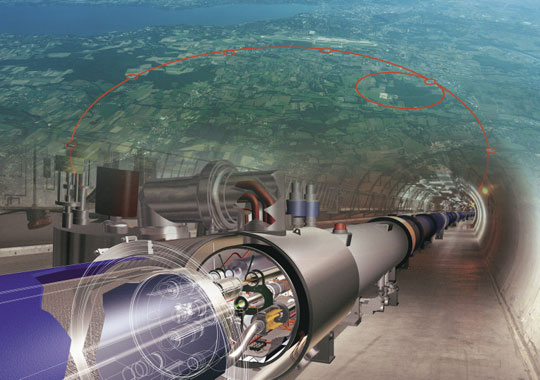Right after the Big Bang, the universe was just a very hot liquid, with temperatures higher than 10,000 billion degrees C.

That was the initial conclusion of the experts working at the world's largest particle launcher - the LHC Large Particle Accelerator of the European Nuclear Research Organization (CERN).
They first created a mini Big Bang explosion in the laboratory, creating a sticky, mucous form of material known as the quark-gluon plasma, or " micro-soup ".
This situation is the perfect environment for the first molecules and atoms to form, which then leads to the birth of stars and galaxies around us today.
This finding surprised physicists because it was completely opposite to the long-accepted theory.
Until now, the scientific community agreed with the argument that right after the formation of the universe, the Big Bang explosion spewed out an extremely hot air, and they combined to create matter.
' In the early moments, the universe was like a very dense liquid , ' the Daily Mail explained by Dr. David Evans , a molecular physicist at Birmingham University, who led the study. Britain participated in the search for the first origin of all things at CERN.
" These results show us about the evolution of an early universe . and this is what really makes people ecstatic ," Evans said.
The new discovery of the universe is one of the first information that the international team of more than 1,000 publishers made after the Big Bang experiment was successfully completed 2 weeks ago.
Scientists used particle accelerators to bombard stripped lead atoms that had lost electrons together inside the analyzer called ALICE. The result of this forced collision is that fireballs of more than 10,000 billion degrees Celsius appear inside the 27 km circumference tunnel.
At such temperatures, the atoms and molecules have melted into particles called quarks and gluons. Physicists have always assumed that at extremely high temperatures after the Big Bang moment, the interaction forces often connect the quarks and gluons together to become weak, creating a mixture in a gas-like state. hot.
Research 5 years ago at a particle accelerator in Upton, New York (USA), created a temperature of about 4,000 billion degrees Celsius and then produced a quark-gluon plasma like liquid, but many experts Assuming that when the temperature rises higher, this liquid will turn into gas.
However, the latest study at CERN shows that predictions never happen, making scientists begin to understand why the quark-gluon plasma does not behave as expected.
Professor Brian Cox, a particle physicist at the University of Manchester, said the new findings have once again made scientists wonder how the newborn universe looks.
" People are talking about the power of interaction between the quarks and how these particles show up. They must interact more strongly than people think and be present in liquid form ," said Professor Cox.
 Van Allen's belt and evidence that the Apollo 11 mission to the Moon was myth
Van Allen's belt and evidence that the Apollo 11 mission to the Moon was myth The levels of civilization in the universe (Kardashev scale)
The levels of civilization in the universe (Kardashev scale) Today Mars, the sun and the Earth are aligned
Today Mars, the sun and the Earth are aligned The Amazon owner announced a secret plan to build a space base for thousands of people
The Amazon owner announced a secret plan to build a space base for thousands of people